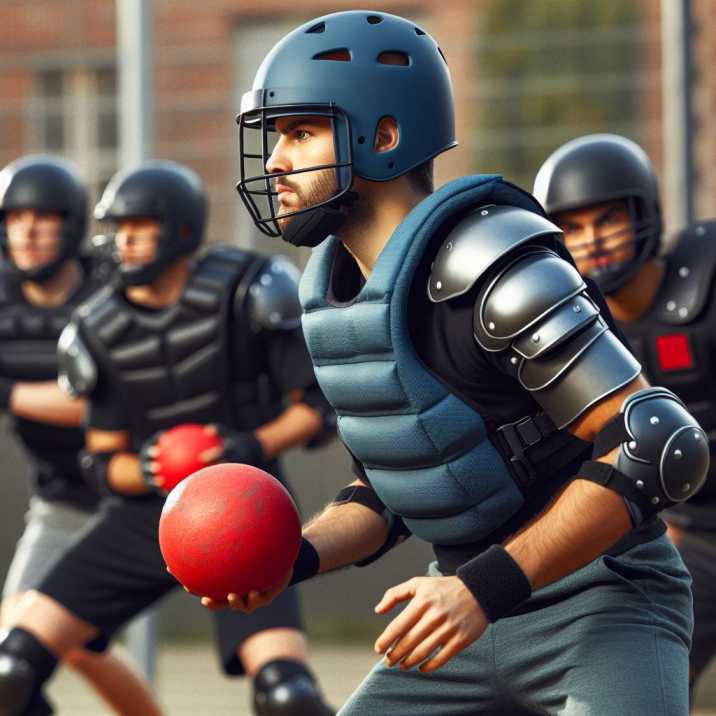Introduction
Table of Contents
In the fast-paced game of dodgeball, players dodge, duck, dip, dive, and… well, dodge! But even with all the agility and skill, injuries can still happen. In this article, we’ll explore some of the common injuries in dodgeball and how to prevent them.

Common Injuries in Dodgeball
Head Injuries
One of the most serious injuries in dodgeball involves the head. Getting hit with a ball, especially in the face or head, can result in concussions or other head trauma. Wearing protective headgear can significantly reduce the risk of such injuries.
Sprains and Strains
Dodgeball involves a lot of sudden movements, which can lead to sprains and strains in various parts of the body, such as the ankles, wrists, or shoulders. Proper warm-up exercises and stretching before playing can help prevent these injuries.
Bruises
Bruises are probably the most common injuries in dodgeball. Getting hit by a fast-moving ball can leave behind painful bruises on the body. While bruises are generally harmless, they can be quite painful. Wearing padded clothing can provide some protection against bruising.
Fractures
In some cases, particularly if a player falls awkwardly or collides with another player, fractures can occur. Fractures most commonly affect the arms, wrists, or ankles. Proper technique and knowing how to fall safely can help reduce the risk of fractures.
Eye Injuries
Dodgeballs are relatively large and can cause significant damage if they hit someone in the eye. Wearing protective eyewear is crucial for preventing eye injuries while playing dodgeball.
Overuse Injuries
Playing dodgeball involves repetitive motions, such as throwing, catching, and dodging, which can lead to overuse injuries like tendonitis or bursitis. Taking regular breaks during play and properly warming up can help prevent these injuries.
How to Prevent Dodgeball Injuries
- Warm-Up: Always start with a proper warm-up to prepare your muscles and joints for the game.
- Use Protective Gear: Wear appropriate protective gear, including padded clothing, headgear, and eyewear.
- Practice Proper Technique: Learn how to throw, catch, and dodge properly to minimize the risk of injury.
- Stay Hydrated: Drink plenty of water before, during, and after playing to prevent dehydration, which can increase the risk of injury.
- Listen to Your Body: If you’re feeling tired or in pain, take a break and rest to prevent overuse injuries.

Table of Information
| Injury | Prevention |
|---|---|
| Head Injuries | Wear protective headgear |
| Sprains and Strains | Proper warm-up and stretching |
| Bruises | Wear padded clothing |
| Fractures | Practice proper technique and safe falling |
| Eye Injuries | Wear protective eyewear |
| Overuse Injuries | Take regular breaks and listen to your body |
Conclusion
While dodgeball is a fun and exciting game, it’s essential to prioritize safety to prevent injuries. By following proper precautions, such as wearing protective gear, warming up, and practicing good technique, players can enjoy the game while reducing the risk of injury.
Frequently Asked Questions (FAQs)
1. What should I do if I get hit in the head with a dodgeball?
Answer: If you get hit in the head, stop playing immediately and assess the situation. If you experience any symptoms of a concussion, such as headache, dizziness, or confusion, seek medical attention.
2. Can wearing padded clothing prevent bruises in dodgeball?
Answer: Yes, wearing padded clothing can provide some protection against bruises by cushioning the impact of the ball.
3. How can I avoid overuse injuries in dodgeball?
Answer: To prevent overuse injuries, take regular breaks during play, and avoid playing for extended periods without rest.
4. Is it necessary to wear protective eyewear while playing dodgeball?
Answer: Yes, wearing protective eyewear is essential for preventing eye injuries, as dodgeballs can cause significant damage if they hit someone in the eye.
5. What should I do if I suspect a fracture after playing dodgeball?
Answer: If you suspect a fracture, stop playing immediately and seek medical attention. Avoid putting weight on the injured limb until you can see a doctor.


